This snubber circuit is used to limit dv/dt during turn-off of the switch by presenting a higher load capacitance to the inductive load usually driven by the transistor. Without the snubber, the rate would be more or less only limited by the difference of load and switch current and the output capacitance of the switch.
Besides limiting the dv/dt it also 'delays' the voltage rise, thereby limiting the turn-off losses in the switch. Of course the resistor has to dissipate the energy stored in the snubber capacitor but there is actually a point, where the overall switching losses are lower as if you didn't use the snubber at all. Here you can find a nice description of it: Snubber Circuits by William P. Robbins
It is rarely used in nowadays flyback converters because the component and assembly cost are too high in comparison to a better power MOSFET, something that is completely different in a 1200V/200A IGBT module.
